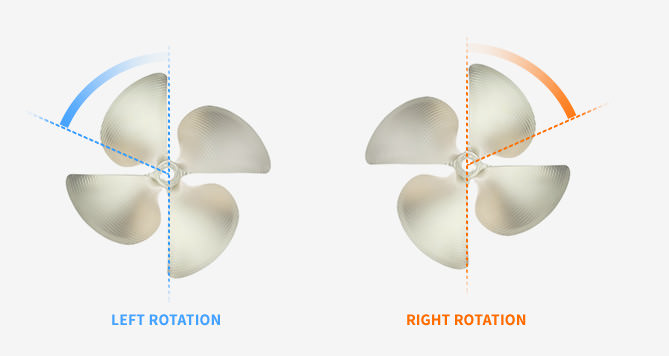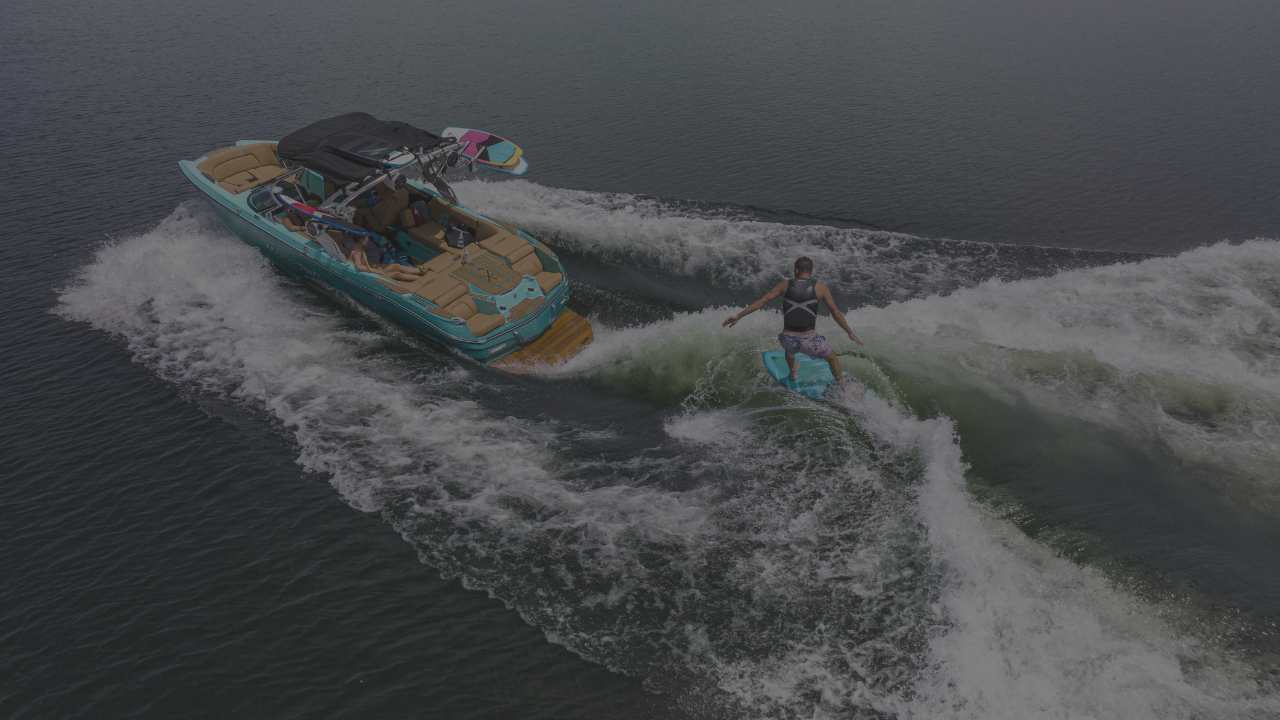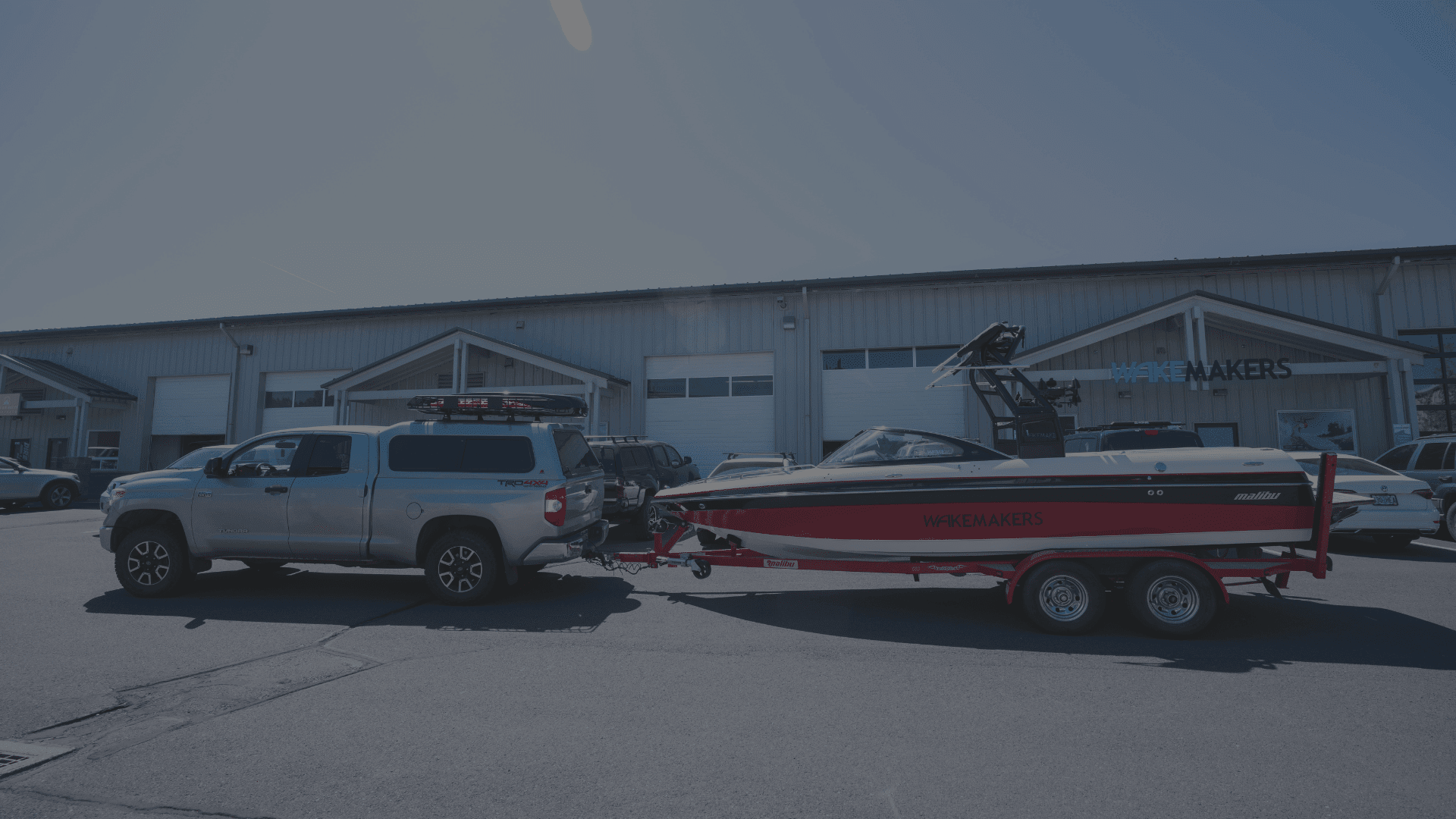
The Basics of Inboard Boat Propellers
Shopping for a new propeller, whether it's simply to replace a damaged one, or because you're looking for better performance, can be a daunting, confusing process. There is a lot of terminology and measurements that the everyday boater won't understand. You must look at the prop's diameter, pitch, cup, rotation, bore, and more.
Fear not, we've developed this Basics of Propellers guide to help answer all those questions to make sure you'll find the perfect prop for your specific application.
If you don't care about the specifics, and just want to find the perfect prop, refer to our exclusive PropFinder Tool.
WakeMAKERS is the largest prop dealer for watersports boats in the world, and we've used our decades of experience to distill all the options down to a specific recommendation based on the individual year/make/model of boat and how you typically use it.
How are props measured?
Understanding the way propellers are measured is paramount to gaining the knowledge needed to choose the right prop for your boat. Depending on the brand of prop, most of these measurements will be listed on the prop hub.
Propeller Diameter
This specification is pretty straight-forward; measure from the middle of the prop's hub out to the end of one blade and double that distance. In general, more diameter means more surface area, which means better transmission of power from the engine to the water. More diameter also means more rotational inertia, which means the prop will not rotate as fast. In general, for slower sports, like surfing and wakeboarding, the larger prop diameter the better. For higher speed activities like slalom skiing and barefooting, a moderately sized prop will provide better performance. Typically the diameter is limited by either clearance between the hull or the trailer, which is important to check.

Propeller Pitch
When it comes to props, the question we most often hear from our customers is "what is pitch?". Often times a deceiving measurement, once understood, pitch makes a lot of sense. Basically, pitch is a measurement of the distance the prop would travel with no slippage after making one full revolution. For example, a prop with a pitch of 12" would travel forward one foot after completing one revolution. Obviously we don't live in the ideal world, and slippage does occur, but for the purposes of comparing one prop to another, pitch is instrument. In most cases, pitch is also the most important variable for controlling boat performance. A lower numerical pitch number means higher engine RPMs relative to boat speed, which is translates to better performance for slower speed activities. A lower pitch prop will perform better for wakesurfing and wakeboarding than for high speed activities such as slalom skiing and barefooting.

Typically not an issue for most of our customers, propeller cup plays a fairly limited role in propellers for watersports boats. Cup, or the curvature of the blade at its edge, primarily translates to the amount of load the prop will put on the motor. This will translate into a subtle change. Lower cup may decrease the top speed by 1 MPH and high cup will provide a slightly higher top speed depending on other variables.
Propeller Bore
Just like shoe size, the bore of the propeller is specific to the prop shaft that is on your boat. In inboard boats, you'll see 1", 1-1/8" and 1-1/4" tapered bore sizes, as well as spline bore props for use on 2003 and newer Mastercraft boats. Shaft is not interchangeable, you must use the correct size prop for your boat's shaft or the prop simply won't fit.
Propeller Rotation
Like bore, rotation is specific to the power train of the boat; if your boat needs a left hand rotation propeller, you must use a left hand rotation propeller.
When should you buy a new propeller?
There are two reasons why you would need a new propeller for your boat. The first and most common reason is that the prop has been damaged. Most inboard boat manufactures tend to prop from the factory with something that would work well for the majority of users who enjoy all water sports which means this is the perfect time to upgrade. If your current propeller meets all your required performance characteristics there is no reason to replace it with something different. Find the model number or size specs and match it for a perfect fit.
The second reason, which we will expand on, would be to increase the boat's performance. This can be the low end pulling power required for a weighted wakesurf boat or the maximum top end speed needed to pull a barefooter behind a waterski boat. Either way, this guide will help develop a better understanding of how to find the best wakeboard or ski boat propeller for your application.
To obtain the best performance from your inboard ski or wakeboard boat you will need to select a propeller that matches how you spend your days on the water. No matter how much horsepower you have, if you are not transferring that energy to the water in the most efficient way possible, your performance and fuel economy will suffer.

Reasons to Upgrade Your Boat's Propeller
Better Performance
When a boat manufacturer selects the stock propeller that comes on a boat from the factory they don't know how the boat will ultimately be used by the boat owner. Because of that, they select a prop that performs for all activities, but doesn't necessarily excel in any one area. Many of our customers only use their boat for wakesurfing and wakeboarding, never traveling more than 30MPH. For that type of application there are huge performance gains as well as efficiency improvements to be had by upgrading the propeller to one that is better optimized for how the boat will be used the majority of the time. The added benefit is that you can use the stock prop that came on your boat as a spare just in case you damage your primary prop. A spare prop is always a good thing to have.
Replace Damaged Prop
If your primary prop was damaged due to an impact, replacing it with either the same prop, one that offers similar performance, or one that offers upgraded performance may make sense.
Upgrading a Wake Prop
Those that add ballast to weight the boat for wakeboarding and wakesurfing find that a middle of the road, stock, propeller will not get the boat to their desired speed quickly enough. As a result the driver must push the engine hard by lengthening the time at wide open throttle on every start. The extreme loads seen when pulling riders out of the water tend to burn a lot more fuel. The answer is to increase the propeller's surface by increasing the overall diameter and decreasing the pitch.
When the engine encounters less time at wide open throttle, the end result is less fuel burned over the course of the day. The trade off to the low end gains are decreased top end speeds and comfortable cruising speeds. If you do travel long distances to find calm water it may be smart to look at something that is in between the boat's current prop and the optimal wakeboard / wakesurf prop.
Upgrading a Ski Prop
Waterskiers and barefooters that have a need for speed also find that the middle of the road, stock, propeller will not produce critical top end maximums. As a result the driver must push the engine to the rev limiter at wide open throttle on every run. Holding the RPM's at their max also burns a significant amount of fuel.
Their answer is the opposite of wakeboarders. By decreasing the propeller's overall diameter and increasing the pitch the blade becomes more slippery as it travels through the water. Less drag equals more speed.
Other Considerations
3 Blade Prop vs. 4 Blade Prop
Check out the "Do I Need a 4 Blade Propeller for Wakeboarding" blog post for a clear explanation on 3 blade vs 4 blade propellers.
High Elevation
Read our high elevation guide to learn about the elevation's effect on the performance of your prop.
Boat and Trailer Clearance
In a perfect world every v-drive wakeboard boat would at least accommodate a 14.5” diameter propeller. Unfortunately, most boats that are just a few years old do not. It is critical that you measure the clearance between the bottom of your boat and the blade at the point when it is closest. Our suggestion and recommendation is at least 3/4” of clearance to avoid getting gel-burn. The absolute minimum acceptable clearance is 5/8". It is wise to also inspect the trailer for any cross members or prop guards that could interfere with a larger diameter prop.




Post Comments
4 Item(s)
Hi Phil,
The 11” pitch prop in a 3 blade and 15” pitch in a 4 blade are two different styles of propellers that would compliment two different transmission options in boats. We would need to simply know what boat you have to make a recommendation.
Thanks!
Hi,
Wondering if I can get some advice please?
What’s the better option for wakeboarding and wake surfing, I can get a 11” pitch prop in a 3 blade or a 15” pitch in a 4 blade. What would you recommend for a boat load of ballast?
Hey Rich,
Having a 4 blade ACME 497 on your older Centurion is probably causing a lot of extra drag and lag in performance for you. Going to something like the ACME 525 should not only help move more of that weight for you but help with overall efficiency on your drive-train as well.
———
WakeMAKERS replied:
##- Please type your reply above this line -##
Hello-
We appreciate and value you as a customer, and would love to hear what you think of your experience. Please take a moment to answer one simple question by clicking either link below:
How would you rate the support you received?
You can copy the following URL into your browser to rate:
https://support.wakemakers.com/requests/314292/satisfaction/new/exESlvDdmtmM9ZK4m6xKNFhjo?locale=1Here’s a reminder of what your ticket was about:
Sunny, Jan 12, 2023, 12:02 PM PST
I have a 2018 Axis T22 with a 450. We surf witb about 2500 lbs of ballast and are at about 6500 feet. Any prop recomendations?
———
WakeMAKERS replied:
##- Please type your reply above this line -##
Hello-
We appreciate and value you as a customer, and would love to hear what you think of your experience. Please take a moment to answer one simple question by clicking either link below:
How would you rate the support you received?
You can copy the following URL into your browser to rate:
https://support.wakemakers.com/requests/314294/satisfaction/new/DVKp311jOlzFynLhHV1KWY2AL?locale=1Here’s a reminder of what your ticket was about:
Sunny, Jan 12, 2023, 12:02 PM PST